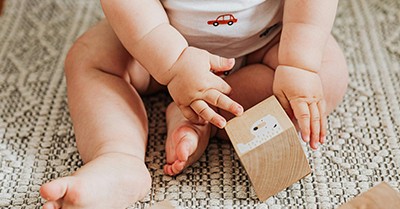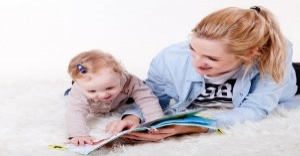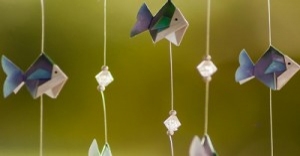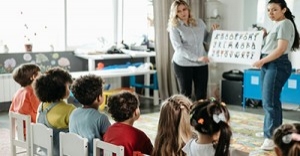A Curiosity Approach environment fosters exploration, creativity, and sensory-rich experiences, making learning feel natural and engaging. Here are some additional ideas to enhance your nursery room setup.
What Is Curiosity Approach In Early Learning
The Curiosity Approach is a modern early childhood education philosophy that encourages child-led learning, exploration, and creativity. It draws inspiration from various educational approaches, including Montessori, Reggio Emilia, Pikler, and Steiner, focusing on open-ended play and natural materials.
Key Principles of the Curiosity Approach
- Child-Led Exploration – Children take the lead in their learning, making choices and discovering concepts through play.
- Natural and Open-Ended Resources – Instead of plastic toys, classrooms feature wooden objects, everyday items, and loose parts to spark imagination.
- Calm and Neutral Environments – Spaces are designed with soft tones and natural textures to create a peaceful atmosphere that enhances focus.
- Encouraging Critical Thinking – Children are thinkers and doers, solving problems and making connections rather than passively following instructions.
- Play-Based Learning – The approach prioritizes hands-on experiences over structured lessons, allowing children to learn through curiosity and discovery.
Why Is It Important?
The Curiosity Approach fosters independent thinking, creativity, and problem-solving skills, helping children become confident learners who engage deeply with their environment. It also promotes a love for learning by making education feel natural and enjoyable.
Implementing The Curiosity Approach In Early Learning
Implementing the Curiosity Approach in early learning involves creating an environment that fosters exploration, creativity, and independent thinking. Here are some ways to bring this philosophy into your setting:
1. Transform the Learning Environment
-
Use neutral tones and natural materials to create a calming space.
-
Replace plastic toys with open-ended resources like wooden objects, fabric, and loose parts.
-
Arrange materials at child-height to encourage independent access and discovery.
2. Encourage Child-Led Exploration
-
Allow children to choose activities based on their interests.
-
Provide provocations—thoughtfully arranged materials that spark curiosity (e.g., a basket of shells with magnifying glasses).
-
Observe and follow their lead, rather than directing play.
3. Introduce Authentic and Everyday Objects
-
Use real-world items like old phones, typewriters, and kitchen tools for tinkering.
-
Create story baskets with sensory elements related to books (e.g., soft fur for Dear Zoo).
-
Offer musical instruments like a ukulele or rain sticks for exploration.
4. Connect with Nature and Outdoor Play
- Bring natural elements indoors—stones, leaves, branches, and water play.
- Create sensory gardens with native plants.
- Encourage loose parts play with sticks, logs, and sand.
Curiosity Approach Activity Ideas
1. Story Baskets with Sensory Elements
- Include textured fabrics related to the story (e.g., soft fur for Dear Zoo).
- Add natural objects (leaves, stones, feathers) to connect stories to the real world.
- Use interactive props like puppets or small figurines to bring stories to life.
2. Musical Connections Basket
- Introduce handmade shakers (filled with rice or beads).
- Add rain sticks or chimes for sensory sound exploration.
- Include cultural instruments to expose children to diverse musical traditions.
3. Tinkering Basket for Exploration
- Gather vintage objects (old keys, magnifying glasses, wooden tools).
- Include mechanical items like gears or wind-up toys to spark curiosity.
- Provide natural loose parts (shells, wooden rings, corks) for open-ended play.
4. Nature and Sensory Stations
- Set up a mini herb garden for children to smell and touch.
- Create a light and shadow play area with mirrors and translucent materials.
- Offer water play with natural elements like floating leaves or smooth stones.
5. Cozy Reading and Reflection Spaces
- Use soft lighting and fairy lights to create a calming atmosphere.
- Provide floor cushions and woven rugs for a cozy storytelling nook.
- Display books in baskets rather than shelves for easy access.
6. Loose Parts Exploration
- Provide wooden rings, corks, shells, and fabric scraps for open-ended play.
- Introduce mirrors and magnifying glasses to encourage investigation.
7. Sensory and Nature Play
- Set up a mini herb garden for children to smell and touch.
- Create a light and shadow play area with translucent materials.
- Offer water play with floating leaves or smooth stones.
8. Storytelling and Dramatic Play
- Use story baskets with props related to books (e.g., soft fur for Dear Zoo).
- Provide dress-up items inspired by different cultures and professions.
- Set up a puppet theater for children to create their own narratives.
9. Musical and Movement Exploration
- Introduce handmade shakers (filled with rice or beads).
- Add rain sticks or chimes for sensory sound exploration.
- Include cultural instruments to expose children to diverse musical traditions.
10. Tinkering and Problem-Solving
- Gather vintage objects (old keys, magnifying glasses, wooden tools).
- Include mechanical items like gears or wind-up toys to spark curiosity.
- Provide natural loose parts for open-ended construction play.
Curiosity Approach For Outdoor Learning
Sensory Play Ideas
- Nature Sensory Bins – Fill trays with leaves, pinecones, sand, or water for hands-on exploration.
- Mud Kitchen – Let children mix mud, water, and natural materials to create imaginative "recipes."
- Light and Shadow Play – Use mirrors, translucent objects, and natural light to explore reflections and shadows.
- Texture Walk – Create a path with different surfaces (grass, pebbles, wood) for children to feel under their feet.
Outdoor Learning Ideas
- Loose Parts Play – Provide sticks, stones, shells, and logs for open-ended construction and creativity.
- Storytelling Circles – Gather children in a Yarning Circle outdoors to share stories inspired by nature.
- Sensory Gardens – Plant herbs, flowers, and vegetables for children to touch, smell, and observe.
- Nature Art – Use leaves, twigs, and petals to create transient art pieces.
Further Reading
List Of Reflection Questions For The Learning Environment
Incorporating Natural Materials In The Learning Environment







 As an Educator in Australia, your pay rate falls under the Children’s Services Award 2010. This award states the minimum amount that an employer can
As an Educator in Australia, your pay rate falls under the Children’s Services Award 2010. This award states the minimum amount that an employer can When working as a qualified Early Childhood Teacher (with a university degree) within a service, your rate of pay will come from the Educational Services
When working as a qualified Early Childhood Teacher (with a university degree) within a service, your rate of pay will come from the Educational Services When working as a Diploma Qualified Educator your pay rate is from the Children's Services Award 2010. This Award states your minimum rate of pay
When working as a Diploma Qualified Educator your pay rate is from the Children's Services Award 2010. This Award states your minimum rate of pay When working as a Cert 3 Qualified Educator, your pay rate is from the Children's Services Award 2010. This Award states your minimum rate of
When working as a Cert 3 Qualified Educator, your pay rate is from the Children's Services Award 2010. This Award states your minimum rate of Educational Leaders play a crucial role in their early childhood service by ensuring that the educational program aligns with best practices and supports the holistic
Educational Leaders play a crucial role in their early childhood service by ensuring that the educational program aligns with best practices and supports the holistic In early childhood education and care, ratios are more than a technicality—they are a frontline safeguard. Every child deserves responsive supervision, emotional connection, and developmental
In early childhood education and care, ratios are more than a technicality—they are a frontline safeguard. Every child deserves responsive supervision, emotional connection, and developmental Here’s a comprehensive Mobile Phone and Smart Watch Policy tailored for early childhood education and care (ECEC) services in Australia, aligned with the latest 2025
Here’s a comprehensive Mobile Phone and Smart Watch Policy tailored for early childhood education and care (ECEC) services in Australia, aligned with the latest 2025 With the new national child safety reforms kicking in on 1 September 2025, early childhood services like yours have a real opportunity to lead the
With the new national child safety reforms kicking in on 1 September 2025, early childhood services like yours have a real opportunity to lead the The Sea of Fish Challenge is a national initiative that invites children, educators, families, and communities to create and display fish artworks as a symbol
The Sea of Fish Challenge is a national initiative that invites children, educators, families, and communities to create and display fish artworks as a symbol Across the early childhood education and care sector, educators are sounding the alarm: current staffing ratios are insufficient to deliver safe, meaningful, and developmentally appropriate
Across the early childhood education and care sector, educators are sounding the alarm: current staffing ratios are insufficient to deliver safe, meaningful, and developmentally appropriate


